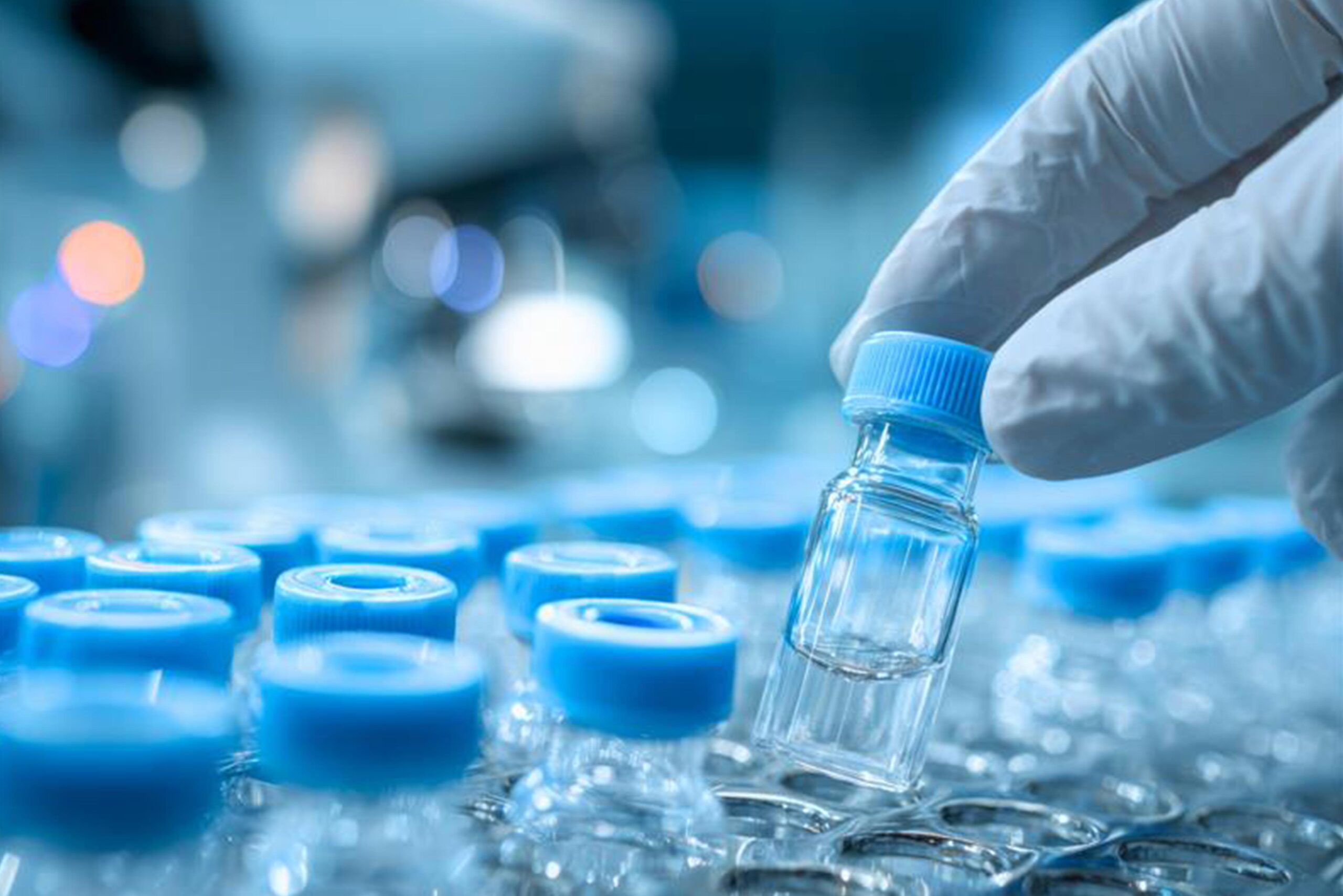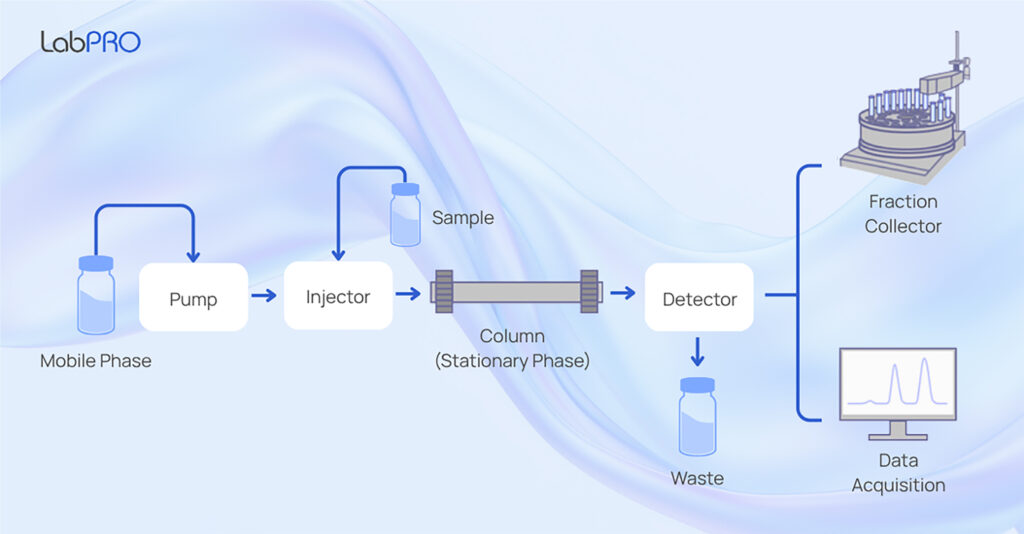How Does Liquid Chromatography Work?

Liquid chromatography (LC) is a powerful technique that allows you to separate complex mixtures into their individual components. It plays an important role in many analytical workflows where precision and purity are essential.
Introduction
Most real-world samples aren’t clean. They contain multiple compounds, often with overlapping properties. If you want to analyze a single target molecule or fully understand everything that’s present, you need a reliable method to separate those components.
Liquid chromatography gives scientists the ability to do exactly that. By using the interactions between the mobile phase, stationary phase, and the sample, it separates compounds based on how they behave in a liquid flow system. This approach is widely used in pharmaceutical analysis, food testing, environmental research, and more.
In this article, we’ll explain how liquid chromatography works, what makes a separation successful, and why even small details like clean vials, consistent filters, and chemically compatible labware make a difference in producing accurate results. For those working in LC or HPLC regularly, the quality of your prep tools can directly affect your data.
On This Page,
What Liquid Chromatography Actually Does
At its core, liquid chromatography separates a mixture of compounds by passing them through a column packed with a stationary phase. A liquid mobile phase carries the sample through the system. Different components interact with the stationary phase in different ways, which causes them to travel through the column at different speeds.
This difference in movement is what leads to separation. The compounds exit the column at different times, which is recorded as retention time on a chromatogram.
The entire process relies on carefully controlled variables like flow rate, column chemistry, solvent composition, and temperature. It also depends on how the sample is introduced and whether it’s clean, consistent, and stable.
Breakdown of the LC Workflow

Every successful LC run follows a similar path:
Sample introduction
The sample is loaded into a vial and injected into the system. Autosamplers make this process reproducible, but vial quality and sealing play an important role.
Mobile phase transport
A liquid solvent carries the sample through the system under pressure, controlled by a pump.
Column separation
Inside the column, the sample’s compounds interact with the stationary phase based on polarity, size, or charge.
Detection
As compounds elute from the column, a detector records their signal. Peaks are identified based on retention time and intensity.
This workflow sounds straightforward, but every step introduces potential points of error if not handled with care.
Why Instrumentation Isn’t the Whole Story
A well-maintained LC or HPLC system can’t fix poor sample prep. Contaminated vials, clogged filters, or inconsistent injection volumes can all distort the result.
Some of the most common issues labs face include:
These problems often trace back to something small and preventable: consumables that aren’t designed with chromatography in mind.
Sample Prep Details That Matter
Here are four areas where the right consumables help reduce variability:
Vials and caps
In chromatography, vials need to be chemically inert, clean, and consistent in volume and wall thickness. Caps must seal tightly without contributing extractables.
Syringe filters
Filtering your sample before injection protects the column from particulates that can clog or damage the stationary phase. Pore size and membrane compatibility should match your sample type and detection method.
High precision micropipettes
Accurate pipetting is essential when preparing standards or injecting small volumes into the LC system. A reliable micropipette helps ensure consistent volume control, especially when working with low-volume or high-sensitivity assays.
Tubes for mixing or diluting
Plasticware should not leach plasticizers or bind analytes. Using certified clean tubes helps avoid these risks, especially when working with low-concentration or volatile samples.
Conclusion
Liquid chromatography depends on control. Every step, from injection to detection, must be consistent if you want to trust the results. What surrounds the instrument, such as the vials, caps, and filters, can impact peak shape, signal intensity, and reproducibility just as much as the method or equipment.
LabPRO’s QuickFit consumables can help labs remove unnecessary variables and build more reliable workflows. These products are made for chromatography users who want clean, consistent results without worrying about contamination or inconsistencies.
Looking for reliable consumables to support your chromatography workflow?
Explore the full range of LabPRO QuickFit consumables
